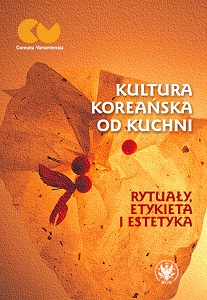Koreańskie tradycje kulinarne w Japonii
Korean Culinary Traditions in Japan
Author(s): Iwona Kordzińska-Nawrocka
Subject(s): Cultural history, Theoretical Linguistics, Applied Linguistics, Philology
Published by: Wydawnictwa Uniwersytetu Warszawskiego
Keywords: Japanese cuisine; Korean cuisine; daikyō court cuisine; Korean Wave; hallyu; hanryū
Summary/Abstract: The main theme of this text is the presence of Korean culinary traditions in Japan for more than twelve centuries, as well as their impact on Japanese cuisine and eating habits. From the 8th to the 19th century it was the Japanese who drew culinary concepts from the Asian continent, largely through the mediation of Korea, while simultaneously adapting it to their own preferences and tastes, as exemplified by the court cuisine (daikyō) or a modified version of nihachisoba buckwheat noodles. Conversely, in the colonial period (1910–1945), it was Japan that acted as an intermediary in introducing the patterns of Western culture into Korea, including the culinary ones. Currently, this direction has been reversed again and under the influence of the so-called Korean Wave (Hallyu in Korean, Hanryū in Japanese), this country and its culinary traditions have become the object of keen interest in Japan. The popularity of various products of Korean culture, especially TV dramas and popular music (K-pop), not only increased the popularity of Korea in Japan but also changed the attitude of Japanese people towards this country. The Japanese, having noticed the similarities between the two societies in their approach to eating and preparing food, value Korean originality and taste expressiveness as well as the richness of aesthetic values in Korean cuisine. This text synthetically presents all these consecutive changes and examines the influence of Korean cuisine in Japan in recent years.
Book: Kultura koreańska od kuchni. Rytuały, etykieta i estetyka
- Page Range: 147-176
- Page Count: 30
- Publication Year: 2021
- Language: Polish
- Content File-PDF

